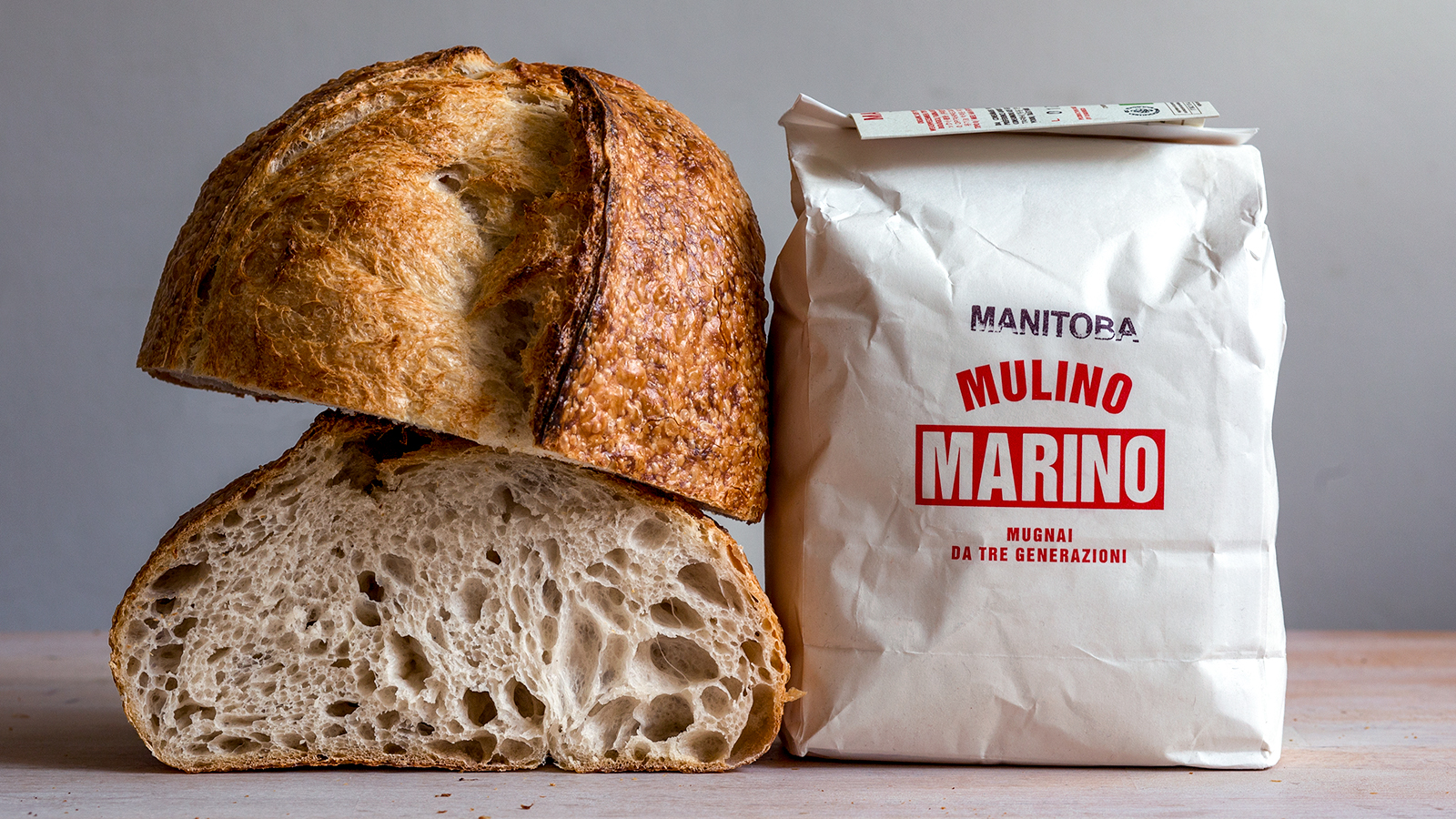So I’ve read that 00 Italian flour is the best for bread and pizza, is that true?
Forse sì, forse no. That’s Italian for maybe yes, maybe no. With that phrase alone you can go a long way in Italy, and get into some very tricky situations. See, the thing is those zero numbers have nothing to do with the doughmaking characteristics of the flour, but really only tell how finely it’s been sifted. Anyway, can’t stop myself saying doppio zero, sounds so cool.
Hang on, virtually everyone says that if you have 00 flour you can make great pizza.
Yes, I know. They’re all wrong and I’m right. Well, half-right. If you get yourself a bag of “farina di tipo ‘00’ per pizza” then yes, it’s good for pizza. And “farina di tipo ‘00’ per dolce” is good for cakes and savoyadi biscuits. So the simple answer is, if you want flour for pizza buy flour for pizza. But don’t buy flour for cakes if you want to buy flour for pizza, even though they are both….drumroll please…tipo 00 flour.
The best flour chosen by the BakeryBits team… ideal for pizza, focaccia, ciabatta:
Mulino Marino Organic Type 00 Soffiata Strong White Flour
Excellent all-round extremely strong 00 flour with superb gluten and stretch. Perfect for overnight and long-fermentation pizza dough, less good for short processes. Protein: 14.8, W: 310– 340
Mulino Marino Organic Type "0" Flour
Excellent for short-process pizza dough or focaccia, medium gluten handling qualities, great rich flavour. Protein: 12.5, W: 240– 290
Gilchesters Organics Pizza and Ciabatta Flour
Great flavour, excellent when mixed 50:50 with strong roller-milled white, or used 100% with firm dough and careful handling. Protein: 12.7%
Matthews Italian Typo 00 Pizza and Pasta Flour
Excellent pizza flour with medium gluten strength, very fine textured flour. Protein:
11.2, W: 280+
So spell out the 0-system for me.
Think of a set of different sieves lined up in front of you, ranging from a superfine mesh – the sort that only cornflour (cornstarch in the USA) would pass through – through to a very coarse sieve that would barely remove wheat husks from wholemeal flour. Well, Italy’s 0-System of grading flour is based on the sieving fineness and how much bran from the milled flour each sieve grade lets through.
Farina 0000 = an utterly utterly fine sieve
Farina 000 = an extremely fine sieve
Farina 00 = a fine sieve
Farina 0 = a medium sieve
Tipo 1 = a coarse sieve
Tipo 2 = a very coarse sieve
Farina Integrale = almost no sieve, wholemeal
I didn’t know that there was anything else than “00” flour from Italy. This is all news to me.
And to many people. To be fair, “Farina Tipo 00” is the common umbrella flour grade you find in Italy, and it covers everything from high protein flours through to soft biscotti flours, from very white flours through to golden ones for pasta (often called durum wheat flour).
So what about ash, I read that the Italians and the French put ash in their flour?
“The Italians”? This is all starting to sound a bit xenophobic. There is no ash in French or Italian flour, it’s a misunderstanding, what happens is that when the flour is tested a quantity is burned and… you know, I’ve written a huge piece on this over for our French T-system article here, best you go and read that.
So, I’m looking for an Italian flour for breadmaking, and you’re saying that simply getting a 00 flour won't cut it. What am I to do? Look at the protein % on the packet?
Ahh no, that won't do it either. A little, but it’s the gluten-making quality of the protein that you need to find out, but there is one way of showing this that Italian millers used and that’s…another drumroll please…the “W” number!
BASTA COSÌ! Another system, I’ll tear my last remaining hairs out, what’s a “W” number in Italian?
This one is very helpful to the baker. The flour’s W number is actually very elegant, developed in 1920 in France by Marcel Chopin. It’s listed as part of the flour’s Alveogramma description, and rated with numbers. A number lower than 160 means that the flour is best for biscotti, while a number greater than 380 is perfect for long fermentation and panettone. And everything in-between is more or less good for everything else. Go high for pizza, go low for genoise.
The other part of the Alveogramma description is the flour’s PL number, and that tells you the extensibility of the flour: very important, for example, in pizza making. A number around 0.65 means the flour produces dough with quite good extensibility, whereas a number around 0.50 will be more resilient. Neither are good or bad, but helpful guide to how easy or not it will be to stretch the dough out and not have it ricochet back after stretching.
The best flour chosen by the BakeryBits team… ideal for long fermentation, lievito di madre, panettone, colomba, overnight doughmaking.
Mulino Marino Organic Type "0" Manitoba "Furia" Flour
Extremely high-protein flour with strong gluten characteristics. Protein: 15-16%, W: 440
Mulino Marino Organic Type 00 Soffiata Strong White Flour
Excellent all-round extremely strong 00 flour with superb gluten and stretch. Perfect for overnight and long-fermentation pizza dough, less good for short processes. Protein: 14.8, W: 310– 340
Gilchesters Organics Pizza and Ciabatta Flour
Great flavour, excellent when mixed 50:50 with strong roller-milled white, or used 100% with firm dough and careful handling. Protein: 12.7%
Matthews Italian Typo 00 Pizza and Pasta Flour
Excellent pizza flour with medium gluten strength, very fine textured flour. Protein:
11.2, W: 280+
So I really can’t just look on the back to check the protein content?
You've asked this before, I can see that this will be a hard habit of yours to correct. Not really, it might correspond to the W and PL numbers but not always, and you may also have a personal preference. Wherever possible at BakeryBits we get you the technical data to help you make the best choices with the flour you buy from us.
Anything else I need to know?
Well Italian flour will list something called the “Filth Test”…
Please, it’s late in the day…
That tells you if there’s any animal contamination (insects, animal hair or poo) or contamination. We always check for it. And in Italy they use the English phrase “Filth Test” to tell you how safe it is.
Errr, well I’m not sure I needed to know that but thank you anyway? And I promise to always buy my flour from you.
You’re welcome!



















